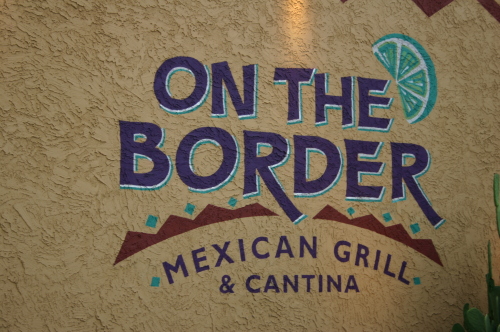Nearly a week after health officials closed an east Vancouver restaurant at the center of a salmonella outbreak, On the Border reopened Monday.
Clark County Public Health gave the go-ahead despite not knowing the source of the outbreak that is suspected of sickening 88 people. As of Monday, health officials had confirmed 28 cases of salmonella linked to the restaurant and identified another 60 probable cases awaiting lab confirmation, said Dr. Alan Melnick, Clark County health officer.
The reality is, health officials, restaurant employees and the public may never know exactly what caused the outbreak, he said.
“In many, if not most, of these food-borne cases we don’t,” Melnick said.
That doesn’t mean the health department isn’t trying to pinpoint the source, he said.
Health officials are investigating three potential sources of bacteria transmission at the restaurant: contaminated food, environmental surfaces and food handlers.
Officials interviewed each of the 88 people who presented symptoms after eating at the restaurant. The goal is to find what ill people had in common with each other, Melnick said.
The problem: the ill people had many things in common. The meals have numerous components to them and many menu items share ingredients, making tracing the bacteria to a particular food item challenging, Melnick said.
In national outbreak cases — such as the current salmonella outbreak linked to peanut products — people in numerous cities get sick. Because those people are spread out across the country, the list of things the people have in common is much shorter. In some cases, the only commonality may be the peanuts, Melnick said.
In contrast, each of the ill people in the local case have not only the food but the restaurant, which has countless possible points of exposure, and the food handlers in common, he said.
“The people that ate in this restaurant have a lot more things in common” than the national cases, Melnick said.
Health inspectors spent an entire day taking samples at the restaurant. They collected food samples, swabbed surfaces and disassembled equipment to test cracks and crevices, Melnick said. Those lab results won’t be back until the end of this week.
But even if the tests point to a common source — a surface, for example — they won’t reveal whether it was the original source, Melnick said.
“It’s the chicken-or-the-egg situation,” he said.
While the presence of salmonella bacteria on a countertop would explain how the bacteria was spread, it wouldn’t explain how the bacteria got on the countertop. Likewise, a food handler could have had the illness and spread it to others or could have gotten sick after contact with the bacteria at the restaurant or eating contaminated food, Melnick said.
“Finding out the ultimate cause is sometimes difficult,” he said.
Preparing to reopen
After health officials closed the restaurant Oct. 9, restaurant employees and a third-party vendor spent several days thoroughly cleaning and sanitizing the restaurant, said Jake Parmer, operations director for the Vancouver restaurant. The health department monitored every step of the cleaning process, he said.
In addition, all food handlers were tested for salmonella. Those who tested positive, at least five employees, cannot return to work until they test negative on two tests 24 hours apart, Melnick said.
Restaurant officials also requested the health department’s help in administering an advanced food safety course for all the employees.
“The main concern for us is obviously the health and safety of our guests and employees,” Parmer said. “We’re going to go above and beyond to make sure our employees and guests are safe.”
The restaurant already requires all managers to be certified in food safety and administers training to all team members.
For years, the restaurant has contracted with a third-party vendor to audit the restaurant’s food safety practices and cleanliness. That practice will continue, Parmer said.
The restaurant has also tested well during county health inspections, recording only two 5-point deductions in seven health inspections.
“It’s just an isolated and unfortunate incident that we don’t expect to ever happen again,” Parmer said.
Melnick said he believes dining out at restaurants, including On the Border, is safe, due to public health monitoring, inspections and food-handler training.
“In general, because of our public health system, eating out is a very safe thing to do,” he said. “This is a really rare outbreak.”
Marissa Harshman: 360-735-4546; http://twitter.com/col_health; http://facebook.com/reporterharshman; marissa.harshman@columbian.com.




